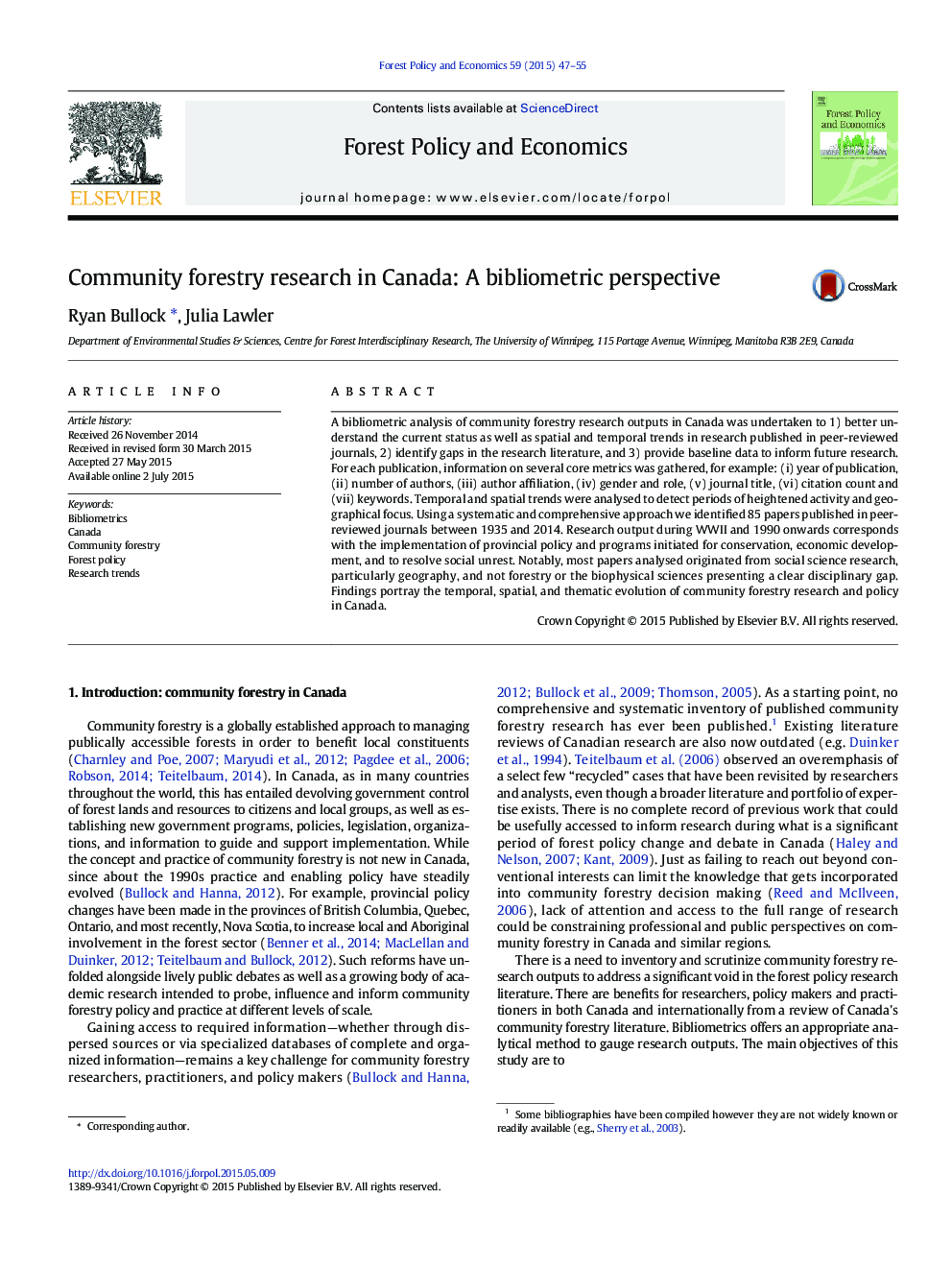| Article ID | Journal | Published Year | Pages | File Type |
|---|---|---|---|---|
| 91737 | Forest Policy and Economics | 2015 | 9 Pages |
•Canadian community forestry research bibliometrics were analysed for trends and gaps.•85 journal papers were identified spanning 1935 to 2014.•Peak output years and research hotspots coincide with provincial policy changes.•Female authorship, global profile, theme variety and collaboration are increasing.•Social science and not natural science dominates community forestry research in Canada.
A bibliometric analysis of community forestry research outputs in Canada was undertaken to 1) better understand the current status as well as spatial and temporal trends in research published in peer-reviewed journals, 2) identify gaps in the research literature, and 3) provide baseline data to inform future research. For each publication, information on several core metrics was gathered, for example: (i) year of publication, (ii) number of authors, (iii) author affiliation, (iv) gender and role, (v) journal title, (vi) citation count and (vii) keywords. Temporal and spatial trends were analysed to detect periods of heightened activity and geographical focus. Using a systematic and comprehensive approach we identified 85 papers published in peer-reviewed journals between 1935 and 2014. Research output during WWII and 1990 onwards corresponds with the implementation of provincial policy and programs initiated for conservation, economic development, and to resolve social unrest. Notably, most papers analysed originated from social science research, particularly geography, and not forestry or the biophysical sciences presenting a clear disciplinary gap. Findings portray the temporal, spatial, and thematic evolution of community forestry research and policy in Canada.
